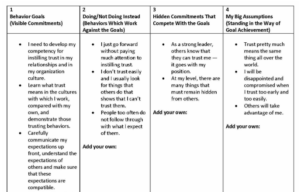Summary
The ability to instill trust is a hallmark of successful global leaders. Cultural differences and perceptions of trust can make this difficult. This article shows how new trust-building behaviors can be developed when collaborating in cross- cultural contexts.
This article discusses trust in the context of “Culturally Tight” and Culturally Loose” cultures.
“Tight cultures are those in which social norms are clearly defined and reliably imposed, leaving little room for individual improvisation and interpretation. Examples of countries with tight cultures include China, France, India, Japan and Singapore. Loose cultures are those in which social norms are flexible and informal. They propose expectations but permit individuals to define the range of tolerable behavior within which they may exercise their own preferences. Thus, enforcement in loose cultures is left to interpersonal mechanisms. Examples of countries with loose cultures include Australia, Belgium, Israel, New Zealand and the United States.” – Rule Makers, Rule Breakers: How Tight and Loose Cultures Wire Our World
Of specific interest to me was the observation that in these different kinds of cultures, trust behaviors, norms, and practices can be very different. This means that to be effective in a different cultural context, new trust behaviors and expectations may need to be discussed and even negotiated. This article gives an example of a tool called a “Behavior Change Map” that can help leaders from different cultures develop new trust-building habits and practices. This map can serve as an excellent coaching or personal development tool.I especially appreciate it’s focus on goals vs. the person.
Sample: Behavior Change Map
For Reflection
- Is my culture a “loose trust” or a “tight trust” culture?
- How is trust built and demonstrated in my culture? What behaviors build trust in my own context?
- Discuss this article with team members and identify who is from a loose vs a tight culture. Explore the implication of this cultural difference. Use the Behavior Change Map as a way to increase your trust-building competencies and skills.
Citation
- Michael F. Tucker. “Trust in Loose and Tight Cultures” Chief Learning Officer. April 9, 2019.
- Michael F. Tucker. “Instilling Trust Across Borders”. PM Today. Jan/Feb 2018.


